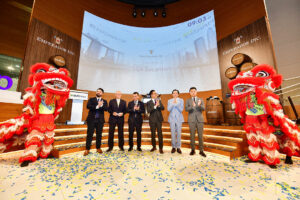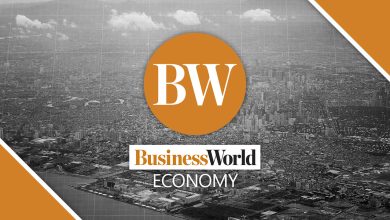Small businesses embrace technology to stay competitive in face of risks

By Miguel Hanz L. Antivola
THE micro, small, and medium enterprise (MSME) and startup ecosystem is becoming more attuned to the need for adaptability and sustainability by assigning more weight to lean, efficient operations, industry experts said, noting that the realignment of priorities is becoming more pronounced as tough times loom.
“With so much global uncertainty, everybody is back to their conservative stance,” Dan I. Siazon, co-founder and senior vice-president of venture capital firm Kickstart Ventures, Inc., told BusinessWorld. “The challenge is to go beyond that and seek opportunity.”
The Asian Development Bank (ADB) reported that 73.1% of Philippine MSMEs faced a sharp drop in domestic demand and operational standstills due to the quarantine imposed at the onset of COVID-19. While businesses continue to deal with the tail end of the crisis, new challenges have emerged in the form of supply chain disruptions caused by the Russia-Ukraine war, as well as surging oil and food prices.
“Many businesses are under pressure to address cost management, pricing dynamics, supply chain diversification, and alternative ways to be creative and productive,” according to Rosemarie B. Ong, chairman of the Philippine Retailers Association (PRA), who also cited the impact of the adverse inflationary environment.
“They don’t want to pass on the costs to the price-sensitive consumer, while maintaining profitability,” she added.
These enterprises have recalibrated to recognize the need for transformation appropriate for the times, reimagining workflows and offerings to become more sustainably competitive. From leveraging e-commerce platforms to implementing automation, MSMEs have embraced technology as a key enabler of an efficient resurgence.
“There is an awakening,” according to Jason Christian Gaguan, co-founder of market insights startup Agile Data Solutions, Inc. and assistant vice-president for commercial at SM Supermalls, referring to MSMEs and startups. “I’m excited about it because everyone now is starting to innovate, which is good for the ecosystem.”
“What we’ve seen now is as we go back to normal and embrace new technology, it’s really more of adapting,” Ms. Ong said on the MSME recovery. “So they can leverage new avenues for their marketing and sales (to become more efficient).”
MSMEs are the backbone of the economy — accounting for 99.58% of all business establishments, 63% of the workforce, and 40% of gross domestic product, according to the Philippine Statistics Authority (PSA) and the Department of Trade and Industry (DTI). Small businesses created 5,461,731 jobs and generated P2.09 billion in sales in 2021.According to the 2023 World Competitiveness Yearbook of the International Institute for Management Development (IMD), the Philippines was 52nd out of 64 economies, down from 48th in 2022. This year marked the sixth straight time the Philippines was in 13th place out of 14 economies in the Asia-Pacific. The yearbook’s ranking of business efficiency put the Philippines at 40th, from 39th last year.
The Philippines dropped two places to 59th out of 100 the countries in the 2023 edition of the Global Startup Ecosystem Index compiled by research house StartupBlink. With a score of 2.469, the Philippines remained the seventh-worst scoring country in the Asia-Pacific.
How do MSMEs and startups innovate and compete while in survival mode? Where should their focus be directed while dealing with the dynamic environment?
BACK TO BASICSMs. Ong said MSMEs are starting to explore more local sourcing instead of relying on imports as a means of lowering costs.
“Many domestic suppliers are being supported to create a resilient supply chain,” Ms. Ong said. “(MSMEs) are performing this balancing act of managing their expenses while continuing to grow revenue.”
In these conditions, scaling down has become a plausible option for some. The former growth mindset has had to be dialed down in favor of sustainability, according to social entertainment and livestreaming platform kumu.
“We had to adjust our growth expectations and ambitions to a timeline of three to five years instead of 12 to 18 months,” according to Rexy Josh L. Dorado, co-founder and president of kumu. “This required focusing on cost optimization, scaling back infrastructure, and finding a pathway to profitability.”
A reassessment of strategy becomes necessary to keep up with the market, as investment wanes in Southeast Asia after an uptick in 2021, according to Deal Street Asia and Kickstart Ventures. The first quarter of 2022 racked up about $5 billion in deals, down from a peak of $8 billion in the fourth quarter of 2021.
“We had record fundraisings in 2021, and things were looking good in the Philippines, ” Mr. Siazon said. “The next year, we were on our way down. And not just in the Philippines.”
“As the threat of the recession looms, people put their money in safer investment vehicles,” he added, as businesses rethink their core needs.“Profitability — that needs to be the goal right now, the true north,” according to Brian P. Cu, chief executive officer and co-founder of hyperlocal e-grocery platform SariSuki. “The degree of freedom given to a startup today is much smaller than what was given last decade where money was cheap and interest rates were low.”
Mr. Gaguan noted that incentive- and discount-driven business models have begun exiting the scene, due to the unsustainability of a pure focus on growth. Resiliency and self-sufficiency have become the hallmarks of successful businesses.
“For all the previous excitement generated by ‘sexy metrics’… startups now are becoming more proposition-oriented, which I think is a good direction,” Mr. Gaguan said. “And smaller startups have a chance at getting funded.”
“It’s no longer just a story of selling fantastic growth at the expense of basic financials,” Mr. Siazon said. “Generally, growth used to be sustained by throwing money at things — the topline grows, but your margins don’t make sense.”
“That expectation has changed. The unit economics must make sense now,” he said, adding that businesses need to go back to the basics like product-market fit and a realistic profitability and self-sufficiency time frame.
“Competitiveness is achieved by just getting the basics right. If you get the basics right, you’re already far ahead of your peers,” he said.
DIGITAL TRANSFORMATIONDigital transformation continues to open up new ways for MSMEs and startups to be viable, but they also raise some concerns.
With full implementation by 2030, digital technology could create up to P5 trillion in economic value, equivalent to about 27% of GDP in 2020, according to a study conducted by global tech advisory firm Access Partnership and commissioned by Google. This requires the Philippines to embrace digital skills training and education, accelerate digital adoption and innovation, and tap opportunities for digital trade.
The pandemic “forced everybody to learn how to use their mobile apps. Nothing like a life-death crisis to really burn things into your system,” Mr. Siazon said, noting the increased adoption of e-commerce and e-wallets.
President Ferdinand R. Marcos, Jr. said in his second State of the Nation Address that digital payments accounted for 42% of retail payments made in 2022, putting the central bank in position to achieve its target of a 50% digital share of payments by this year.
“As digital wallet usage became much more prevalent, a strong base has been put forward,” Mr. Siazon said. “It also helped B2C (business to consumer) businesses. Online businesses thrived.”
According to the GoDaddy 2023 Data Observatory, 62% of Philippine small business respondents make up to half of their annual revenue from online sales channels.
“In just the past months of 2023, there has been a 117% year-on-year surge in the number of sellers joining our platform,” TikTok Philippines said of the growth of its Shop feature. “Notably, within the same timeframe, there was a 53% year-on-year increase in sellers achieving breakeven status, who are poised for more long-term success.”
Building community viewership through more creative campaigns is being touted as a new sales model for businesses, especially those engaged in shoppertainment. The segment is projected to be worth over $1 trillion globally by 2025, according to the Boston Consulting Group.
Social media algorithms and more democratized data analytics have also paved the way for making it easier to operate a small-scale businesses, which can move faster than larger competitors. “Data analytics empowers MSMEs to make well-informed decisions due to real-time insights and fast reactions,” Ms. Ong said.
“The difference between a big company and a startup lies in execution. Even though they have the budget, big companies move a little slower,” Mr. Gaguan said. “As a small team, we can immediately listen to our customers and change.”
While e-commerce is all the rage, technology is often taken for granted or overestimated, according to SariSuki. “A lot of the communities that we work with — simply pinning their address on a map, they don’t know how,” Mr. Cu said. “So we had to make it as simple as possible.”
Understanding the user demographic and having a good product manager become key to leveraging technology while also making it easy to adopt by stakeholders. Digital literacy initiatives must be pursued to grow the channel.
“It’s a hard thing to do — to have tech adoption be done by a startup,” according to Manuel Florencio A. Mejia IV, chief commercial officer and co-founder of SariSuki. “There’s desire. You just need to tap that desire.”
The ultimate technological hurdle might be artificial intelligence (AI), which presents both a threat and an opportunity.
The global AI market is expected to top $407.0 billion by 2027, with a compound annual growth rate of 36.2% during the forecast period of 2022-2027, according to analytics firm MarketsandMarkets. “This large TAM (total addressable market) leads us to believe that there is significant opportunity for growth and profitability in AI technology,” Brian Dy, head of research at Kickstart, said.
Anna Irmina B. Navarrete, co-founder and president of Kickstart, noted the importance of skepticism when assessing TAM, as there are many data providers available online for such information. “It is very easy to look and be impressed,” she said.
“We must also look at the direction of growth and the trends surrounding the market,” she added, noting that the technology tends to go through a “hype cycle” during which the belief spreads in its potential to revolutionize the world.
Mr. Siazon noted that AI should encourage more efficient business workflow and further exploration of its applicability beyond the initial “hyped” fields to arrive at a more sustainable level of doing business.
“Over the long run, there’s also an opportunity to liberate people who may otherwise be stuck in that kind of role to explore other potential areas where human creativity cannot be matched by AI,” he said.
“We hope that in a country full of creative talent like the Philippines, they can employ that to expanding their creative abilities. Maybe introduce new areas for people like us to invest in, as well as new industries where the country can excel.”




